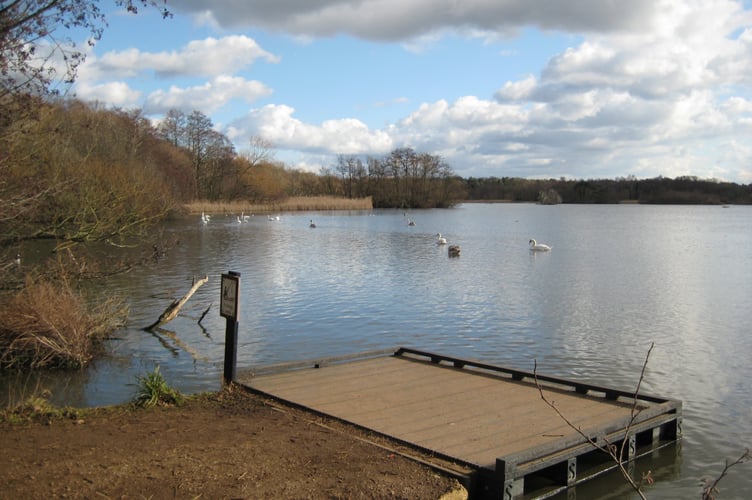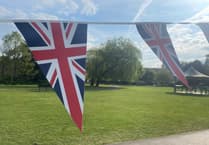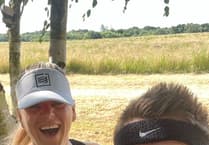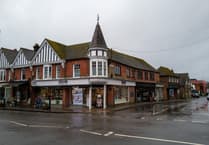
What’s the difference between a pond and a lake? I’d have said it’s a question of size: a lake is bigger than a pond.
But if Fleet Pond near Farnborough conjures up images of a wet area on a village green or a small patch of water in a suburban garden, think again. Fleet Pond is on a much larger scale: it’s Hampshire’s largest freshwater lake with a surface area of 21 hectares (52 acres) – over twice the size of Goldsworth Park Lake in Woking.
Fleet Pond and its surroundings comprise Fleet Pond Local Nature Reserve whose reed beds, marshes, heathland and woodland provide sanctuary for a rich and diverse community of animal and plant life.
You’re especially sure to see a wide variety of water fowl and the blue flash of a kingfisher.
Fleet Pond is owned by Hart District Council and managed in partnership between Hart Countryside Service and the Fleet Pond Society, a resourceful and dedicated band of local volunteers.
The Nature Reserve’s total area is 57 hectares (141 acres) of which 48 hectares (118 acres) is designated as a Site of Special Scientific Interest (SSSI): it consists of wetlands, dry heathland and the lake itself.
Why is this large expanse of water a “pond”, not a lake? The Fleet Pond Society explains it’s because it was man-made. In medieval times, a pond always referred to an artificially created body of water while a lake was natural.
Fleet Pond is believed to have been created in the 12th century by the Bishopric of Winchester and was stocked with fish by the monks to provide an essential source of food.
The centrepieces of the nature world at Fleet Pond are its wildfowl. You’re likely to see great crested grebe, tufted duck, gadwall, shoveler, mute swan, coot, common pochard, wigeon, greylag geese and possibly several other species too.
The Fleet Pond Society’s website includes nature notes, reports of sightings (not just of wildfowl) and conservation reports: visit fleetpond.org.uk Three recommended walks introducing a selection of wildlife habitats have been marked by colour-coded posts. A short 1km (0.8 mile) “red” route takes you along a circuit from the car park to the lakeside via a heathland area, visiting a fishing jetty designed for wheelchair use and a picnic site with a good view of the lake, the fringing reedbed and the open marsh. The medium “yellow” route of 3km (1.8 miles) takes a full circuit of the lake. It is suitable for wheelchairs and children carriers in all but the wettest weather. Boardwalks have been built across marshy sections. The “blue” route is 4km (2.5 miles) and follows the yellow route but extends to include Brookly Wood (where the footpath can be very muddy in winter) and Wood Lane Heath. The walks are described in an excellent leaflet, jointly produced by the Fleet Pond Society and Hart District Council Countryside Services. It includes a map and descriptions of the reserve’s habitats. To download a copy visit https://bit.ly/2WVxCk6
Fleet Pond’s car park is accessed via the narrow, brick railway bridge off the A3013, near junction 4A of the M3: look for the brown sign pointing to a lane which immediately crosses the railway, after which you should turn right along a gravel track to reach the parking area after 400m.
The location using what3words is https://w3w.co/chapels.sues.famous





Comments
This article has no comments yet. Be the first to leave a comment.